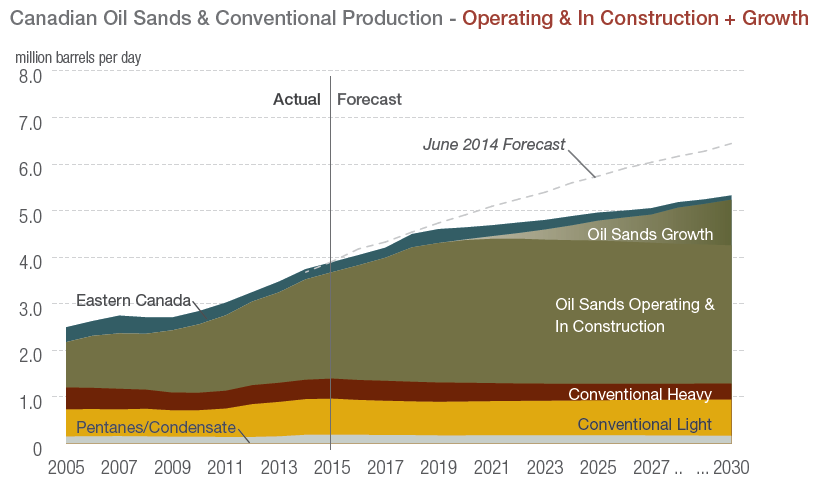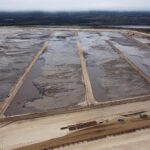Oil sands remain the primary driver of Canadian production
The Canadian Association of Petroleum Producers (CAPP) released its annual Crude Oil Forecast, Markets and Transportation report for 2015, projecting Canadian crude oil production to grow 43% to 5.3 MMBOPD by 2030. CAPP expects most of this increased production to come from the Canadian oil sands.
According to the 2015 report, Canadian oil sands production will grow to 4 MMBOPD by 2030, representing 75% of Canadian crude output. Conventional crude production in Western Canada, including condensate, will reach 1.3 MMBOPD, while offshore production in Eastern Canada will for 91 MBOPD.
In light of the increased production, CAPP’s 2015 report put special emphasis on building the means to transport Canadian crude oil to markets around the world. “We have the energy the world needs – our challenge is getting it there,” said Greg Stringham, CAPP’s vice president, oil sands and markets. “Connecting Canada’s growing supplies to these markets safely and competitively is a top priority. Over the next two decades, we believe all forms of transportation will still be needed to move Canadian oil to markets to the east, west and south.”
CAPP expects total oil and natural gas industry capital investment at $45 billion in 2015, down nearly 40% from $73 billion in 2014. In the oil sands, 2015 capital investment forecasts are almost a third lower than their 2014 levels, with oil sands projects expecting to attract just $23 billion in 2015, compared to $33 billion the year before.
Production forecasts were revised down from last year’s Crude Oil Forecast report, with the declining oil prices curbing some potential future production.








